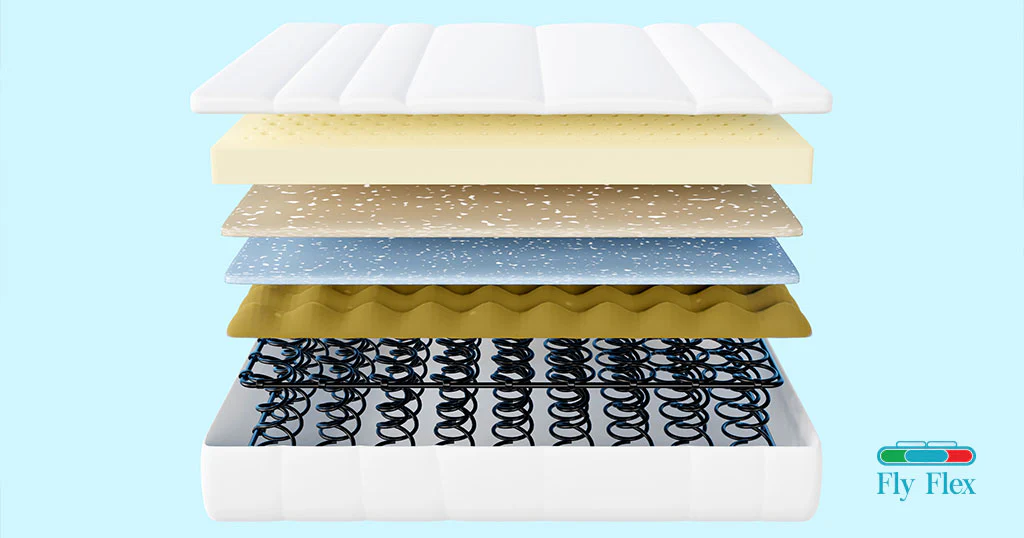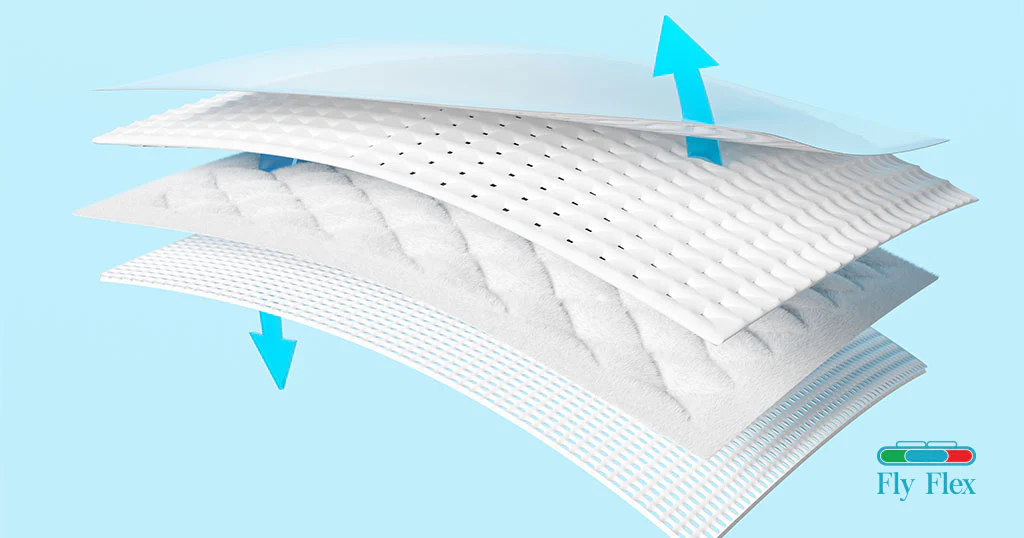Finding the perfect mattress is not just about comfort; it goes beyond that. A good mattress plays a crucial role in ensuring you get a restful night’s sleep, which is essential for your overall health and well-being. Sleep quality directly affects your energy levels, mood, and productivity throughout the day. Therefore, evaluating the quality of a mattress becomes paramount in your search for the perfect sleep surface.
When you have a high-quality mattress that meets your specific needs, you can wake up feeling refreshed and rejuvenated, ready to take on the day. On the other hand, a poor-quality mattress can lead to discomfort, back pain, and restless nights, leaving you feeling exhausted and unable to perform at your best.
In this article, we will delve into the factors that determine a mattress’s quality and what makes a good mattress. By understanding these essential aspects, you will be empowered to make an informed decision and invest in a mattress that will provide you with the ultimate sleep comfort.
Factors to Consider When Evaluating Mattress Quality
There are several key factors to consider when evaluating the quality of a mattress. By thoroughly examining these factors, you can gain insights into how well a mattress will support your body, relieve pressure points, and promote a healthy sleep environment.
Material
The material of a mattress has a significant impact on its overall quality and comfort. Different materials offer varying levels of support, pressure relief, and temperature regulation. Let’s take a closer look at some of the most common mattress materials:
- Memory Foam: Memory foam mattresses contour to your body, providing excellent support and pressure relief. They are known for their ability to alleviate back and joint pain. However, memory foam can retain heat, so look for options with cooling gel or open-cell technology.
- Innerspring: Innerspring mattresses feature a coil support system, providing firmness and support. They are ideal for those who prefer a traditional feel and a responsive surface. However, keep in mind that innerspring mattresses may not offer as much pressure relief as other types.
- Latex: Latex mattresses are known for their durability and natural hypoallergenic properties. They offer a responsive and buoyant feel, providing excellent support and pressure relief. Additionally, latex mattresses are known for their breathability and temperature regulation.
- Hybrid: Hybrid mattresses combine the best of both worlds by incorporating memory foam or latex layers with an innerspring support system. This fusion results in a mattress that offers excellent support, pressure relief, and temperature regulation.
When evaluating the material of a mattress, consider your specific needs and preferences. Keep in mind factors such as support, pressure relief, motion isolation, and temperature regulation to determine which material aligns best with your sleep requirements.
Firmness
The firmness of a mattress is another crucial aspect to consider when evaluating its quality. Firmness refers to how soft or firm a mattress feels when you lie down on it. It plays a significant role in determining the level of support and comfort a mattress can provide.
The ideal firmness level varies from person to person, depending on factors such as body weight, sleeping position, and personal preference. However, finding the right balance is essential. A mattress that is too soft may not provide adequate support, leading to improper spinal alignment and back pain. On the other hand, a mattress that is too firm can cause discomfort and pressure points.
To evaluate the firmness of a mattress, consider factors such as your body weight and sleeping position. Side sleepers may prefer a softer mattress to relieve pressure on their hips and shoulders, while back and stomach sleepers typically need a firmer surface for proper spinal alignment.
Support

Mattress support refers to how well it keeps your body aligned while you sleep. A supportive mattress promotes proper spinal alignment, which is crucial for preventing back pain and maintaining a healthy posture.
When evaluating a mattress’s support, consider factors such as the construction and design of the support system. Innerspring mattresses typically offer good support due to their coil systems, while memory foam and latex mattresses provide contouring support that adapts to your body’s curves.
Additionally, pay attention to the edge support of a mattress. A mattress with strong edge support ensures that you can use the entire surface without feeling like you might roll off.
Durability and Longevity

Investing in a mattress is a significant decision, so it’s important to choose one that will stand the test of time. Evaluating a mattress’s durability and longevity is crucial to ensure you get the most value for your money.
Factors such as the quality of materials, construction, and brand reputation can give you insights into a mattress’s durability. Look for mattresses that are made from high-quality materials and have a solid construction. Additionally, consider reading customer reviews and checking warranties to gauge the longevity of a mattress.
Keep in mind that while a high-quality mattress may come with a higher price tag, it can be a worthwhile investment in the long run, as it will provide you with years of comfortable and restorative sleep.
Size and Compatibility
When evaluating a mattress’s quality, don’t forget to consider its size and compatibility with your bed frame and bedroom. Ensure that the mattress dimensions match your needs and fit well in your space.
If you share your bed with a partner or have pets, consider a larger size to accommodate everyone comfortably. Additionally, check the compatibility of the mattress with your bed frame or foundation to ensure a proper fit.
Warranties and Return Policies
Lastly, evaluate the warranties and return policies offered by the mattress manufacturer or retailer. A good warranty can provide peace of mind, as it protects you against defects and ensures you can have the mattress repaired or replaced if needed.
Read the warranty terms carefully to understand what is covered and for how long. Additionally, check the return policy in case you’re not satisfied with the mattress after trying it out.
By considering these factors when evaluating a mattress’s quality, you can make an informed decision and choose a mattress that meets your specific needs and preferences.
Types of Mattresses and Their Pros and Cons

When searching for the perfect mattress, you will come across various types, each with its own unique features and benefits. Understanding the pros and cons of different mattress types can help you narrow down your options and find the one that suits you best. Let’s explore some of the most common types of mattresses:
Memory Foam Mattresses
Memory foam mattresses have gained immense popularity in recent years due to their ability to contour to the body and relieve pressure points. These mattresses are made from a viscoelastic polyurethane foam that reacts to heat and pressure, conforming to the body’s shape.
Pros:
– Excellent pressure relief and contouring support.
– Minimal motion transfer, making them ideal for couples
– Can help alleviate back and joint pain.
– Quiet and noiseless
Cons:
– Can retain heat, potentially causing discomfort for hot sleepers
– May have an initial off-gassing smell
– Can feel too soft for those who prefer a firmer surface.
Innerspring Mattresses
Innerspring mattresses are the traditional type of mattress that feature a coil support system topped with comfort layers. These mattresses are known for their firmness and responsiveness.
Pros:
– Firm support and good spinal alignment
– Excellent breathability and temperature regulation
– Wide range of options and price points
– Bouncy surface, making it easier to move around
Cons:
– Limited motion isolation, which can disturb sleep partners.
– Less pressure relief compared to memory foam or latex mattresses.
– Coil systems may wear out over time, leading to sagging.
Latex Mattresses
Latex mattresses are made from natural or synthetic latex foam. They offer a unique combination of support, comfort, and durability.
Pros: – Excellent support and pressure relief. – Naturally hypoallergenic and resistant to dust mites and mold. – Breathable and temperature-regulating. – Durable and long-lasting.
Cons: – Can have a higher price point compared to other mattress types. – May feel too firm for those who prefer a softer surface. – Heavy and difficult to move or rotate.
Hybrid Mattresses
Hybrid mattresses combine the benefits of different materials, typically memory foam or latex with an innerspring support system. These mattresses aim to provide the best of both worlds.
Pros: – Excellent support, contouring, and pressure relief. – Good motion isolation, making them suitable for couples. – Enhanced breathability and temperature regulation. – Wide range of options to suit different preferences.
Cons: – Can be more expensive compared to traditional innerspring or memory foam mattresses. – Heavier and may be difficult to move or rotate. – The specific benefits of hybrid mattresses may vary based on the individual components used.
Understanding the pros and cons of different mattress types can help you make an informed decision. Consider your specific needs, preferences, and budget when choosing the mattress type that aligns best with your sleep requirements.
Understanding Mattress Materials and Construction

To evaluate a mattress’s quality, it’s essential to understand the materials used in its construction. The materials play a significant role in determining the mattress’s comfort, support, durability, and other key factors that contribute to a good night’s sleep.
Comfort Layers
Comfort layers are the top layers of a mattress that directly come in contact with your body. These layers are responsible for providing cushioning, pressure relief, and initial comfort.
Memory foam, latex, and polyfoam are common materials used in comfort layers. Memory foam provides contouring support and pressure relief, latex offers a responsive and buoyant feel, while polyfoam can provide a balance of comfort and support.
When evaluating a mattress’s quality, consider the thickness and density of the comfort layers. Thicker comfort layers typically offer better pressure relief and comfort, while denser layers tend to be more durable.
Support Core
The support core is the foundation of a mattress and provides the necessary support to keep your body properly aligned. It plays a crucial role in maintaining spinal alignment, reducing pressure points, and preventing discomfort.
Innerspring mattresses have a coil support system as their core, while foam mattresses typically use high-density polyfoam or a foam core. Hybrid mattresses combine the support of an innerspring system with comfort layers made of foam or latex.
When evaluating a mattress’s support core, consider factors such as the type and gauge of coils in innerspring mattresses or the density and quality of foam in foam mattresses. A high-quality support core ensures long-lasting support and durability.
Cover
The mattress cover not only adds a layer of protection but also contributes to the overall comfort and breathability. It’s important to choose a mattress with a cover made from durable and breathable materials.
Look for covers made from natural fibers such as cotton or bamboo, as they allow for better airflow and moisture-wicking properties. Additionally, consider covers that are removable and machine-washable for easy maintenance and hygiene.
Understanding the materials used in a mattress’s construction will help you evaluate its quality and determine if it meets your specific needs and preferences.
Assessing Mattress Support and Comfort
Support and comfort are two crucial aspects to consider when evaluating a mattress’s quality. While support ensures proper spinal alignment and pressure relief, comfort determines how well you can relax and fall asleep on the mattress.
Support
A supportive mattress is essential for maintaining a healthy sleep posture and preventing back pain. It should distribute your body weight evenly and keep your spine properly aligned, regardless of your sleeping position.
When assessing a mattress’s support, consider factors such as the firmness level, the type of support core, and the materials used in the construction. Memory foam and latex mattresses often provide excellent support by conforming to your body’s curves, while innerspring mattresses offer firm support through their coil systems.
It’s important to find a mattress that aligns with your specific needs and preferences. If you have a history of back pain, consider a mattress that provides targeted support to alleviate pressure points and promote spinal alignment.
Comfort
Comfort is subjective and varies from person to person. What feels comfortable to one individual may not be the same for another. However, evaluating a mattress’s comfort can be done by considering factors such as firmness, materials used, and the overall feel of the mattress.
Firmness is a key factor in determining comfort. Some individuals prefer a softer mattress that allows them to sink in, while others prefer a firmer surface that provides more support. Finding the right balance is essential to ensure you feel comfortable and well-supported.
The materials used in a mattress’s construction also contribute to its comfort. Memory foam and latex offer a contouring and pressure-relieving feel, while innerspring mattresses provide a bouncier surface.










